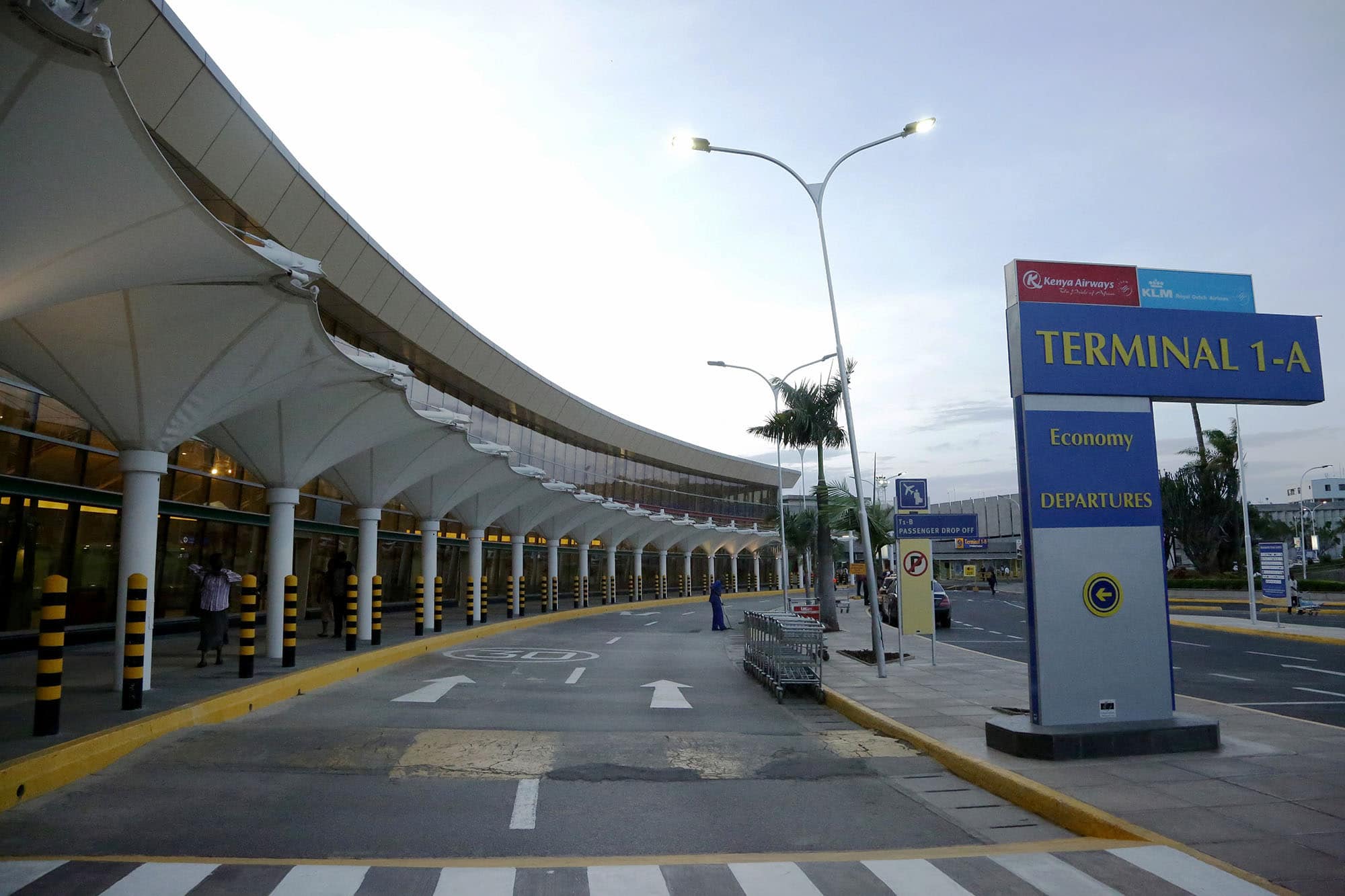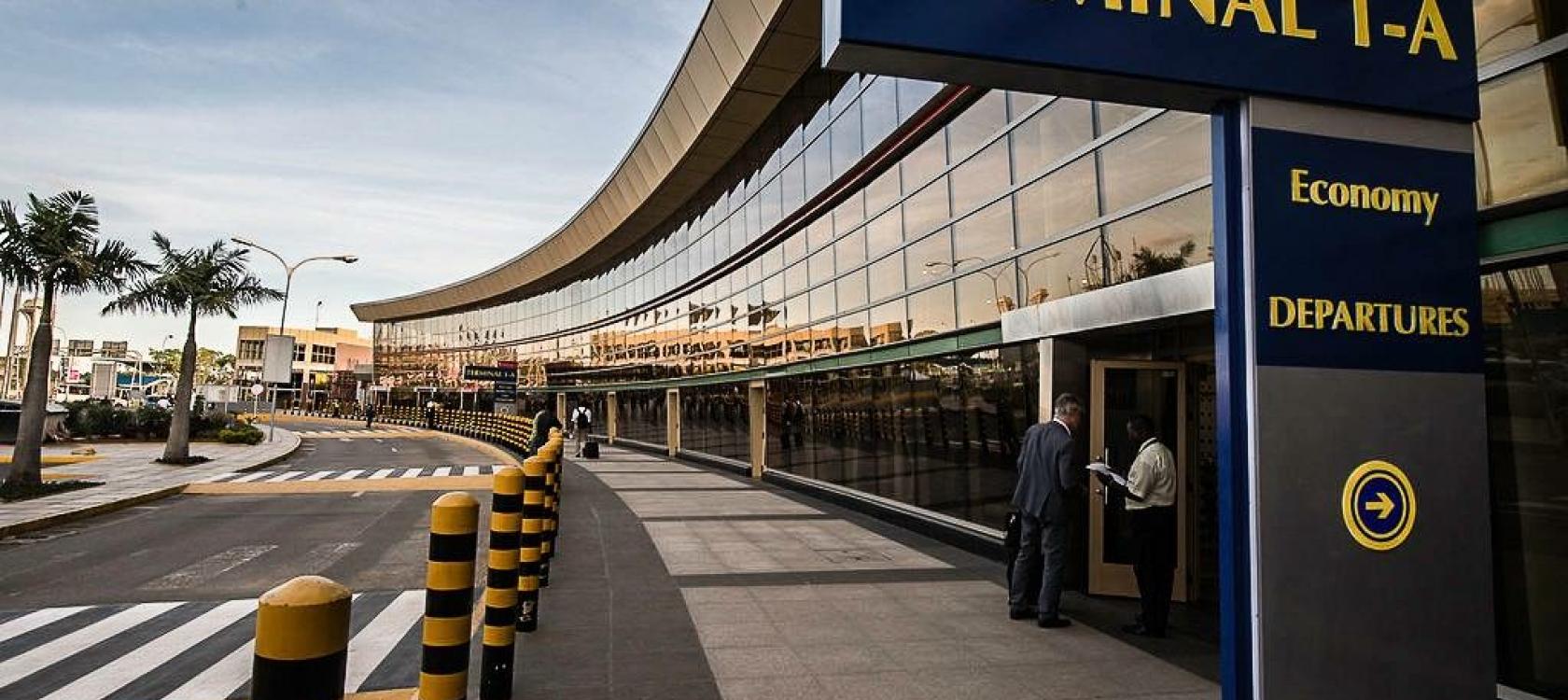The Jomo Kenyatta International Airport (IATA: NBO, ICAO: HKJK) usually abbreviated as JKIA, is Kenya’s and Nairobi’s major international airport located in Nairobi, Kenya’s capital and largest city. Kisumu International Airport, Moi International Airport, and Eldoret International Airport are Kenya’s other three major international airports in Kenya. JKIA is 18 kilometers (11 miles) southeast of Nairobi’s central business area, in the Embakasi neighborhood. The airport provides scheduled flights to over 50 countries. Originally known as Embakasi Airport, the airport was renamed in 1978 to honor Kenya’s first president and prime minister, Jomo Kenyatta. In 2016, the airport serviced over 7 million people, making it the continent’s sixth busiest airport in terms of passenger volume.
Travelling outside and within Kenya
Jomo Kenyatta International Airport is an ideal entry and exit point for East and Central Africa maintained and managed by the Kenya Airports Authority (KAA).
The KAA’s flagship airport is JKIA. Over 40 passenger airlines and 25 cargo carriers serve the airport.
Jomo Kenyatta International Airport, formerly known as Embakasi Airport and Nairobi International Airport, is Kenya’s largest airport and East Africa’s busiest. Because of its prominence as an aviation center, it sets the standard for other airports in the vicinity.
Kenya is quite simple to reach because to a multitude of airline connections. Most foreign flights will land at Nairobi’s Jomo Kenyatta International Airport, which serves as a hub for East Africa. There are several modes of transportation available from there. Local planes fly to most regions on a regular basis, so you may have breakfast in Nairobi and lunch on safari, whether it’s in the Masai Mara, overlooking a Rift Valley lake, or deep within the calm Samburu National Park. For those who prefer not to travel, a Kenyan overland safari is a fantastic opportunity to get a sense for the nation. The road networks are in good shape, however, the going can be a little slower and bumpier in certain spots, especially in more remote locations.
Private vehicles with a driver-guide are a nice alternative, but it’s crucial to reserve with a reputable business because there are unscrupulous operators that prey on the inexperienced.
Climbing Mount Kilimanjaro from Jomo Kenyatta International Airport
Flying into Nairobi’s Jomo Kenyatta International Airport (airport code: NBO) is usually less expensive. To travel from Nairobi to Moshi or Arusha, however, you must first get a Kenyan visa, then spend the night in Nairobi before taking a bus or private vehicle to Tanzania. The journey takes about 7-8 hours.
When you consider these fees as well as the added time (one or two travel days depending on whether you begin via Nairobi), flying directly into Kilimanjaro International Airport is far more feasible and less stressful. Almost all of our clients fly through Kilimanjaro International Airport.
Kilimanjaro tours depart from Moshi and Arusha, Tanzania’s two largest towns. Flying into Kilimanjaro International Airport, sometimes known as KIA, is the most convenient route to reach these locations (airport code: JRO).
It’s easy to get a cab or a private vehicle to Moshi or Arusha once you arrive at the airport. Both cities are less than an hour distant, and a taxi would set you back around $50 each car.
JKIA is recommended for our clients beginning their tours from Kenya before entering Tanzania or simply clients that want to do tours in Kenya like climbing Mount Kenya or safaris in Kenya.

International Connections
International planes arrive in Nairobi from South Africa, the United Kingdom, France, the Netherlands, and Dubai. Local airlines link Nairobi to the major tourist locations, including both National Parks and beach resorts.
Scheduled Flights
Nairobi Foreign Airport is the principal hub for international flights. Local airlines link Nairobi to main tourist attractions in both National Parks and coastal regions.
Charter/Shuttle Flight
Nairobi is connected to the bulk of Kenya’s national parks, as well as Tanzania and Zanzibar, via a dependable network of light aircraft flights.
These are offered on a first-come, first-served basis. Private charters can be booked around the country for people with tight schedules.
SELF-DRIVE TRANSFERS
The road conditions are quite varied, there are huge distances to travel, and most regions require 4WD transportation. In Kenya, we do not advocate this means of transportation.
Terminals at JKIA, Nairobi
There are various terminals at the Nairobi-based airport where passengers move between ground transportation and the facilities that allow them to board and alight from the airplane. Within the airport terminal, passengers can buy tickets, transfer their luggage, and go through security.
Terminal 1A Airside.
Two terminals are available. 1A, 1B, 1C, and 1E are used for international arrivals and departures, while 1D is used for domestic departures and arrivals. Terminal 1 is arranged in a semi-circular orientation and is divided into four parts: 1A, 1B, 1C, and 1E are used for international arrivals and departures, while 1D is used for domestic departures and arrivals. Low-cost airlines utilize Terminal 2. The Kenya Air Force uses the old terminal, which is located on the north side of the runway and is frequently referred to as Old Embakasi Airport.
According to KAA, the airport’s Terminal 1-A can accommodate 2.5 million people. The Kenyan government plans to expand JKIA’s terminals to accommodate over 25 million passengers per year by 2025.
In 2016, JKIA accounted for more than 70% of the country’s total passenger traffic. It also served more than 7 million passengers. Domestic travelers accounted for 40% of all passengers at Jomo Kenyatta International Airport (JKIA) in 2016. This is an increase from 32% five years ago (2012).
International Departures and Arrivals in Terminal 1A
Terminal 1A is a three-level facility with a capacity of 2.5 million passengers per year, 30 check-in desks, 12 departure gates, extensive seating, and food and retail options. There are five baggage carousels in the arrivals area. Skyteam member airlines typically utilize this terminal.
International Departures from Terminal 1B
Common-use check-in desks are located in Terminal 1B, with security checkpoints leading to the departure lounge on level 1.
The Aspire lounge, as well as duty-free shops and cafes, are located on level one.
International Departures from Terminal 1C
There are common-use check-in desks in this terminal, as well as security checkpoints leading to the departure lounge on level 1. Duty-free stores, the Kenya Airways Simba Lounge, the Turkish Airlines Lounge, and a cafe are all located on level 1.
Domestic Flights from Terminal 1D
Serves passengers on domestic aircraft who are departing and arriving. Only Kenya Airways and its subsidiary, Jambojet, were present.
International Arrivals at Terminal 1E
A parking area was transformed into the temporary International Arrivals terminal when the main International Arrivals and Departures terminal was closed due to a fire.
Following that, this terminal was established to service incoming passengers on airlines serving Terminals 1B and 1C.
NOTE: Terminals 1B, 1C, and 1D will be remodeled and extended in 2017, after which JKIA is expected to be able to handle 12 million passengers.
Low-cost Carriers at Terminal 2
It mostly serves low-cost airlines (LCCs). The prefabricated terminal, which has a capacity of 2.5 million passengers, opened in April 2015 and was designed to alleviate overcrowding. International and domestic check-in counters and boarding gates are located at Terminal 2. The Mara Lounge and the Mount Kenya Lounge, both on Level 1 and open 24 hours, are currently available at Terminal 2.
JKIA, Nairobi Airport Lounges
The Simba Lounge and the Pride Lounge, both on the second floor of Terminal 1A, debuted in January 2015.
The two facilities, which have a combined capacity of 350 people, were built for KQ’s Premier World and SkyTeam’s Sky Priority passengers at a cost of KES 135 million ($1.35 million). A Turkish Airlines TAV Lounge (T1B) and a Swissport Aspire Lounge are also available (T1C). Both are ordinary lounges that need elite status or a purchased admission to enter.
A Second Runway
A new instrument landing system-equipped runway with a length of 5,500 meters (18,000 feet) was authorized for construction in January 2017 at a cost of KES 37 billion shillings (about US$370 million) which will be larger than the current one.
It will also increase the number of flights from 25 to 45 each hour. The new runway will be a category 2 runway, and it will be built to complement the existing runway, which was completed in the 1970s. The project’s planned design is for a 4.8-kilometer-long, 75-meter-wide runway. The existing runway is 60 meters in length and 60 meters wide. This is an ICAO code F that can handle newer wide-body aircraft such as the Airbus A380 and Boeing 747-8. Fog lights will be installed on the new runway, which is now solely illuminated on the sides. Long-haul flights to places such as New York City will be possible thanks to the runway, which can transport up to 32 tonnes of people and goods.

